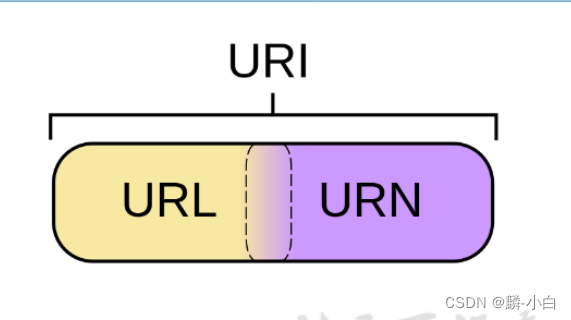写在前面
Hello大家好, 我是【麟-小白】,一位软件工程专业的学生,喜好计算机知识。希望大家能够一起学习进步呀!本人是一名在读大学生,专业水平有限,如发现错误或不足之处,请多多指正!谢谢大家!!!
如果小哥哥小姐姐们对我的文章感兴趣,请不要吝啬你们的小手,多多点赞加关注呀!❤❤❤ 爱你们!!!
目录
3.从客户端发送文件给服务端,服务端保存到本地。并返回“发送成功”给客户端。并关闭相应的连接。
【往期回顾】
1. TCP网络编程
1.1 基于Socket的TCP编程
Java 语言的基于套接字编程分为服务端编程和客户端编程,其通信模型如图所示: 客户端 Socket 的工作过程包含以下四个基本的步骤 :
客户端 Socket 的工作过程包含以下四个基本的步骤 :
- 创建 Socket:根据指定服务端的 IP 地址或端口号构造 Socket 类对象。若服务器端响应,则建立客户端到服务器的通信线路。若连接失败,会出现异常。
- 打开连接到 Socket 的输入/出流: 使用 getInputStream()方法获得输入流,使用getOutputStream()方法获得输出流,进行数据传输
- 按照一定的协议对 Socket 进行读/写操作:通过输入流读取服务器放入线路的信息(但不能读取自己放入线路的信息),通过输出流将信息写入线程。
- 关闭 Socket:断开客户端到服务器的连接,释放线路
服务器程序的工作过程包含以下四个基本的步骤:
- 调用 ServerSocket(int port) :创建一个服务器端套接字,并绑定到指定端口上。用于监听客户端的请求。
- 调用 accept():监听连接请求,如果客户端请求连接,则接受连接,返回通信套接字对象。
- 调用该Socket类对象的 getOutputStream() 和 getInputStream ():获取输出流和输入流,开始网络数据的发送和接收。
- 关闭ServerSocket和Socket对象:客户端访问结束,关闭通信套接字。
1.2 客户端创建Socket对象
- 客户端程序可以使用Socket类创建对象,创建的同时会自动向服务器方发起连接。Socket的构造器是:
- Socket(String host,int port)throws UnknownHostException,IOException:向服务器(域名是host。端口号为port)发起TCP连接,若成功,则创建Socket对象,否则抛出异常。
- Socket(InetAddress address,int port)throws IOException:根据InetAddress对象所表示的IP地址以及端口号port发起连接。
- 客户端建立socketAtClient对象的过程就是向服务器发出套接字连接请求。
Socket s = new Socket(“192.168.40.165”,9999); OutputStream out = s.getOutputStream(); out.write(" hello".getBytes()); s.close();
1.3 服务器建立 ServerSocket 对象
- ServerSocket 对象负责等待客户端请求建立套接字连接,类似邮局某个窗口中的业务员。也就是说,服务器必须事先建立一个等待客户请求建立套接字连接的ServerSocket对象。
- 所谓“接收”客户的套接字请求,就是accept()方法会返回一个 Socket 对象
ServerSocket ss = new ServerSocket(9999); Socket s = ss.accept (); InputStream in = s.getInputStream(); byte[] buf = new byte[1024]; int num = in.read(buf); String str = new String(buf,0,num); System.out.println(s.getInetAddress().toString()+”:”+str); s.close(); ss.close();
1.4 例题
1.客户端发送内容给服务端,服务端将内容打印到控制台上。
import org.junit.Test; import java.io.ByteArrayOutputStream; import java.io.IOException; import java.io.InputStream; import java.io.OutputStream; import java.net.InetAddress; import java.net.ServerSocket; import java.net.Socket; /** * 实现TCP的网络编程 * 例子1:客户端发送信息给服务端,服务端将数据显示在控制台上 * @author 麟-小白 */ public class TCPTest1 { /** 客户端 */ @Test public void client() { Socket socket = null; OutputStream os = null; try { //1.创建Socket对象,指明服务器端的ip和端口号 InetAddress inet = InetAddress.getByName("192.168.3.5"); socket = new Socket(inet, 8899); //2.获取一个输出流,用于输出数据 os = socket.getOutputStream(); //3.写出数据的操作 os.write("你好,我是客户端mm".getBytes()); } catch (IOException e) { e.printStackTrace(); } finally { //4.资源的关闭 if (os != null) { try { os.close(); } catch (IOException e) { e.printStackTrace(); } } if (socket != null) { try { socket.close(); } catch (IOException e) { e.printStackTrace(); } } } } /** 服务端 */ @Test public void server() { ServerSocket ss = null; Socket socket = null; InputStream is = null; ByteArrayOutputStream baos = null; try { //1.创建服务器端的ServerSocket,指明自己的端口号 ss = new ServerSocket(8899); //2.调用accept()表示接收来自于客户端的socket socket = ss.accept(); //3.获取输入流 is = socket.getInputStream(); //不建议这样写,可能会有乱码 // byte[] buffer = new byte[1024]; // int len; // while((len = is.read(buffer)) != -1){ // String str = new String(buffer,0,len); // System.out.print(str); // } //4.读取输入流中的数据 baos = new ByteArrayOutputStream(); byte[] buffer = new byte[5]; int len; while ((len = is.read(buffer)) != -1) { baos.write(buffer, 0, len); } System.out.println(baos.toString()); System.out.println("收到了来自于:" + socket.getInetAddress().getHostAddress() + "的数据"); } catch (IOException e) { e.printStackTrace(); } finally { if (baos != null) { //5.关闭资源 try { baos.close(); } catch (IOException e) { e.printStackTrace(); } } if (is != null) { try { is.close(); } catch (IOException e) { e.printStackTrace(); } } if (socket != null) { try { socket.close(); } catch (IOException e) { e.printStackTrace(); } } if (ss != null) { try { ss.close(); } catch (IOException e) { e.printStackTrace(); } } } } }2.客户端发送文件给服务端,服务端将文件保存在本地。
import org.junit.Test; import java.io.*; import java.net.InetAddress; import java.net.ServerSocket; import java.net.Socket; /** * 实现TCP的网络编程 * 例题2:客户端发送文件给服务端,服务端将文件保存在本地。 * @author 麟-小白 */ public class TCPTest2 { /** 这里涉及到的异常,应该使用try-catch-finally处理 */ @Test public void client() throws IOException { //1. Socket socket = new Socket(InetAddress.getByName("127.0.0.1"),9090); //2. OutputStream os = socket.getOutputStream(); //3. FileInputStream fis = new FileInputStream(new File("beauty.jpg")); //4. byte[] buffer = new byte[1024]; int len; while((len = fis.read(buffer)) != -1){ os.write(buffer,0,len); } //5. fis.close(); os.close(); socket.close(); } /** 这里涉及到的异常,应该使用try-catch-finally处理 */ @Test public void server() throws IOException { //1. ServerSocket ss = new ServerSocket(9090); //2. Socket socket = ss.accept(); //3. InputStream is = socket.getInputStream(); //4. FileOutputStream fos = new FileOutputStream(new File("beauty1.jpg")); //5. byte[] buffer = new byte[1024]; int len; while((len = is.read(buffer)) != -1){ fos.write(buffer,0,len); } //6. fos.close(); is.close(); socket.close(); ss.close(); } }3.从客户端发送文件给服务端,服务端保存到本地。并返回“发送成功”给客户端。并关闭相应的连接。
import org.junit.Test; import java.io.*; import java.net.InetAddress; import java.net.ServerSocket; import java.net.Socket; /** * 实现TCP的网络编程 * 例题3:从客户端发送文件给服务端,服务端保存到本地。并返回“发送成功”给客户端。 * 并关闭相应的连接。 * @author 麟-小白 */ public class TCPTest3 { /** 这里涉及到的异常,应该使用try-catch-finally处理 */ @Test public void client() throws IOException { //1. Socket socket = new Socket(InetAddress.getByName("127.0.0.1"), 9090); //2. OutputStream os = socket.getOutputStream(); //3. FileInputStream fis = new FileInputStream(new File("beauty.jpg")); //4. byte[] buffer = new byte[1024]; int len; while ((len = fis.read(buffer)) != -1) { os.write(buffer, 0, len); } //关闭数据的输出 socket.shutdownOutput(); //5.接收来自于服务器端的数据,并显示到控制台上 InputStream is = socket.getInputStream(); ByteArrayOutputStream baos = new ByteArrayOutputStream(); byte[] bufferr = new byte[20]; int len1; while ((len1 = is.read(bufferr)) != -1) { baos.write(buffer, 0, len1); } System.out.println(baos.toString()); //6. fis.close(); os.close(); socket.close(); baos.close(); } /** 这里涉及到的异常,应该使用try-catch-finally处理 */ @Test public void server() throws IOException { //1. ServerSocket ss = new ServerSocket(9090); //2. Socket socket = ss.accept(); //3. InputStream is = socket.getInputStream(); //4. FileOutputStream fos = new FileOutputStream(new File("beauty2.jpg")); //5. byte[] buffer = new byte[1024]; int len; while ((len = is.read(buffer)) != -1) { fos.write(buffer, 0, len); } System.out.println("图片传输完成"); //6.服务器端给予客户端反馈 OutputStream os = socket.getOutputStream(); os.write("你好,美女,照片我已收到,非常漂亮!".getBytes()); //7. fos.close(); is.close(); socket.close(); ss.close(); os.close(); } }
![]()
2. UDP网络编程
2.1 UDP网络通信
- 类 DatagramSocket 和 DatagramPacket 实现了基于 UDP 协议网络程序。
- UDP数据报通过数据报套接字 DatagramSocket 发送和接收,系统不保证UDP数据报一定能够安全送到目的地,也不能确定什么时候可以抵达。
- DatagramPacket 对象封装了UDP数据报,在数据报中包含了发送端的IP地址和端口号以及接收端的IP地址和端口号。
- UDP协议中每个数据报都给出了完整的地址信息,因此无须建立发送方和接收方的连接。如同发快递包裹一样。
2.2 DatagramSocket 类的常用方法
- public DatagramSocket(int port)创建数据报套接字并将其绑定到本地主机上的指定端口。套接字将被绑定到通配符地址,IP 地址由内核来选择。
- public DatagramSocket(int port,InetAddress laddr)创建数据报套接字,将其绑定到指定的本地地址。本地端口必须在 0 到 65535 之间(包括两者)。如果 IP 地址为 0.0.0.0,套接字将被绑定到通配符地址,IP 地址由内核选择。
- public void close()关闭此数据报套接字。
- public void send(DatagramPacket p)从此套接字发送数据报包。DatagramPacket 包含的信息指示:将要发送的数据、其长度、远程主机的 IP 地址和远程主机的端口号。
- public void receive(DatagramPacket p)从此套接字接收数据报包。当此方法返回时,DatagramPacket的缓冲区填充了接收的数据。数据报包也包含发送方的 IP 地址和发送方机器上的端口号。 此方法在接收到数据报前一直阻塞。数据报包对象的 length 字段包含所接收信息的长度。如果信息比包的长度长,该信息将被截短。
- public InetAddress getLocalAddress()获取套接字绑定的本地地址。
- public int getLocalPort()返回此套接字绑定的本地主机上的端口号。
- public InetAddress getInetAddress()返回此套接字连接的地址。如果套接字未连接,则返回 null。
- public int getPort()返回此套接字的端口。如果套接字未连接,则返回 -1。
2.3 DatagramPacket类的常用方法
- public DatagramPacket(byte[] buf,int length)构造 DatagramPacket,用来接收长度为 length 的数据包。 length 参数必须小于等于 buf.length。
- public DatagramPacket(byte[] buf,int length,InetAddress address,int port)构造数据报包,用来将长度为 length 的包发送到指定主机上的指定端口号。length参数必须小于等于 buf.length。
- public InetAddress getAddress()返回某台机器的 IP 地址,此数据报将要发往该机器或者是从该机器接收到的。
- public int getPort()返回某台远程主机的端口号,此数据报将要发往该主机或者是从该主机接收到的。
- public byte[] getData()返回数据缓冲区。接收到的或将要发送的数据从缓冲区中的偏移量 offset 处开始,持续 length 长度。
- public int getLength()返回将要发送或接收到的数据的长度。
2.4 UDP网络通信流程
流程:1. DatagramSocket 与 DatagramPacket2. 建立发送端,接收端3. 建立数据包4. 调用 Socket 的发送、接收方法5. 关闭 Socket发送端与接收端是两个独立的运行程序发送端DatagramSocket ds = null; try { ds = new DatagramSocket(); byte[] by = "hello,atguigu.com".getBytes(); DatagramPacket dp = new DatagramPacket(by, 0, by.length, InetAddress.getByName("127.0.0.1"), 10000); ds.send(dp); } catch (Exception e) { e.printStackTrace(); } finally { if (ds != null) { ds.close(); } }接收端在接收端,要指定监听的端口。DatagramSocket ds = null; try { ds = new DatagramSocket(10000); byte[] by = new byte[1024]; DatagramPacket dp = new DatagramPacket(by, by.length); ds.receive(dp); String str = new String(dp.getData(), 0, dp.getLength()); System.out.println(str + "--" + dp.getAddress()); } catch (Exception e) { e.printStackTrace(); } finally { if (ds != null) { ds.close(); } }
2.5 UDP网络编程代码演示
import org.junit.Test; import java.io.IOException; import java.net.DatagramPacket; import java.net.DatagramSocket; import java.net.InetAddress; /** * UDP协议的网络编程 * @author 麟-小白 */ public class UDPTest { /** 发送端 */ @Test public void sender() throws IOException { DatagramSocket socket = new DatagramSocket(); String str = "我是UDP方式发送的导弹"; byte[] data = str.getBytes(); InetAddress inet = InetAddress.getLocalHost(); DatagramPacket packet = new DatagramPacket(data,0,data.length,inet,9090); socket.send(packet); socket.close(); } /** 接收端 */ @Test public void receiver() throws IOException { DatagramSocket socket = new DatagramSocket(9090); byte[] buffer = new byte[100]; DatagramPacket packet = new DatagramPacket(buffer,0,buffer.length); socket.receive(packet); System.out.println(new String(packet.getData(),0,packet.getLength())); socket.close(); } }
![]()
3. URL编程
3.1 URL类
- URL(Uniform Resource Locator):统一资源定位符,它表示 Internet 上某一资源的地址。
- 它是一种具体的URI,即URL可以用来标识一个资源,而且还指明了如何locate这个资源。
- 通过 URL 我们可以访问 Internet 上的各种网络资源,比如最常见的 www,ftp站点。浏览器通过解析给定的 URL 可以在网络上查找相应的文件或其他资源。
- URL的基本结构由5部分组成:
- <传输协议>://<主机名>:<端口号>/<文件名>#片段名?参数列表
- 例如:
- http://192.168.1.100:8080/helloworld/index.jsp#a?username=shkstart&password=123
- #片段名:即锚点,例如看小说,直接定位到章节
- 参数列表格式:参数名=参数值&参数名=参数值....
3.2 URL类构造器
- 为了表示URL,java.net 中实现了类 URL。我们可以通过下面的构造器来初始化一个 URL 对象:
- public URL (String spec):通过一个表示URL地址的字符串可以构造一个URL对象。例如:URL url = new URL ("http://www. atguigu.com/");
- public URL(URL context, String spec):通过基 URL 和相对 URL 构造一个 URL 对象。例如:URL downloadUrl = new URL(url, “download.html")
- public URL(String protocol, String host, String file); 例如:new URL("http","www.atguigu.com", “download. html");
- public URL(String protocol, String host, int port, String file); 例如: URL gamelan = newURL("http", "www.atguigu.com", 80, “download.html");
- URL类的构造器都声明抛出非运行时异常,必须要对这一异常进行处理,通常是用 try-catch 语句进行捕获。
3.3 URL类常用方法
一个 URL 对象生成后,其属性是不能被改变的,但可以通过它给定的方法来获取这些属性:
- public String getProtocol( ) 获取该URL的协议名
- public String getHost( ) 获取该URL的主机名
- public String getPort( ) 获取该URL的端口号
- public String getPath( ) 获取该URL的文件路径
- public String getFile( ) 获取该URL的文件名
- public String getQuery( ) 获取该URL的查询名
URL url = new URL("http://localhost:8080/examples/myTest.txt"); System.out.println("getProtocol() :"+url.getProtocol()); System.out.println("getHost() :"+url.getHost()); System.out.println("getPort() :"+url.getPort()); System.out.println("getPath() :"+url.getPath()); System.out.println("getFile() :"+url.getFile()); System.out.println("getQuery() :"+url.getQuery());
3.4 URLConnection类
针对 HTTP 协议的 URLConnection
- URL的方法 openStream():能从网络上读取数据
- 若希望输出数据,例如向服务器端的 CGI (公共网关接口-Common GatewayInterface-的简称,是用户浏览器和服务器端的应用程序进行连接的接口)程序发送一些数据,则必须先与URL建立连接,然后才能对其进行读写,此时需要使用URLConnection 。
- URLConnection:表示到URL所引用的远程对象的连接。当与一个URL建立连接时,首先要在一个 URL 对象上通过方法 openConnection() 生成对应的 URLConnection对象。如果连接过程失败,将产生IOException.
- URL netchinaren = new URL ("http://www.atguigu.com/index.shtml");
- URLConnectonn u = netchinaren.openConnection( );
- 通过URLConnection对象获取的输入流和输出流,即可以与现有的CGI程序进行交互。
- public Object getContent( ) throws IOException
- public int getContentLength( )
- public String getContentType( )
- public long getDate( )
- public long getLastModified( )
- public InputStream getInputStream( )throws IOException
- public OutputSteram getOutputStream( )throws IOException
3.5 URI、URL和URN的区别
- URI,是uniform resource identifier,统一资源标识符,用来唯一的标识一个资源。而URL是uniform resource locator,统一资源定位符,它是一种具体的URI,即URL可以用来标识一个资源,而且还指明了如何locate这个资源。而URN,uniform resource name,统一资源命名,是通过名字来标识资源,比如mailto:[email protected]。也就是说,URI是以一种抽象的,高层次概念定义统一资源标识,而URL和URN则是具体的资源标识的方式。URL和URN都是一种URI。
- 在Java的URI中,一个URI实例可以代表绝对的,也可以是相对的,只要它符合URI的语法规则。而URL类则不仅符合语义,还包含了定位该资源的信息,因此它不能是相对的。
3.6 小结
- 位于网络中的计算机具有唯一的IP地址,这样不同的主机可以互相区分。
- 客户端-服务器是一种最常见的网络应用程序模型。服务器是一个为其客户端提供某种特定服务的硬件或软件。客户机是一个用户应用程序,用于访问某台服务器提供的服务。端口号是对一个服务的访问场所,它用于区分同一物理计算机上的多个服务。套接字用于连接客户端和服务器,客户端和服务器之间的每个通信会话使用一个不同的套接字。TCP协议用于实现面向连接的会话。
- Java 中有关网络方面的功能都定义在 java.net 程序包中。Java 用 InetAddress 对象表示 IP地址,该对象里有两个字段:主机名(String) 和 IP 地址(int)。
- 类 Socket 和 ServerSocket 实现了基于TCP协议的客户端-服务器程序。Socket是客户端和服务器之间的一个连接,连接创建的细节被隐藏了。这个连接提供了一个安全的数据传输通道,这是因为 TCP 协议可以解决数据在传送过程中的丢失、损坏、重复、乱序以及网络拥挤等问题,它保证数据可靠的传送。
- 类 URL 和 URLConnection 提供了最高级网络应用。URL 的网络资源的位置来统一表示Internet 上各种网络资源。通过URL对象可以创建当前应用程序和 URL 表示的网络资源之间的连接,这样当前程序就可以读取网络资源数据,或者把自己的数据传送到网络上去。
3.7 URL编程代码演示
import java.net.MalformedURLException; import java.net.URL; /** * URL网络编程 * 1.URL:统一资源定位符,对应着互联网的某一资源地址 * 2.格式: * http://localhost:8080/examples/beauty.jpg?username=Tom * 协议 主机名 端口号 资源地址 参数列表 * * @author 麟-小白 */ public class URLTest { public static void main(String[] args) { try { URL url = new URL("http://localhost:8080/examples/beauty.jpg?username=Tom"); // public String getProtocol( ) 获取该URL的协议名 System.out.println(url.getProtocol()); // public String getHost( ) 获取该URL的主机名 System.out.println(url.getHost()); // public String getPort( ) 获取该URL的端口号 System.out.println(url.getPort()); // public String getPath( ) 获取该URL的文件路径 System.out.println(url.getPath()); // public String getFile( ) 获取该URL的文件名 System.out.println(url.getFile()); // public String getQuery( ) 获取该URL的查询名 System.out.println(url.getQuery()); } catch (MalformedURLException e) { e.printStackTrace(); } } }import java.io.FileOutputStream; import java.io.IOException; import java.io.InputStream; import java.net.HttpURLConnection; import java.net.URL; /** * @author 麟-小白 */ public class URLTest1 { public static void main(String[] args) { HttpURLConnection urlConnection = null; InputStream is = null; FileOutputStream fos = null; try { URL url = new URL("http://localhost:8080/examples/beauty.jpg"); urlConnection = (HttpURLConnection) url.openConnection(); urlConnection.connect(); is = urlConnection.getInputStream(); fos = new FileOutputStream("day10\\beauty3.jpg"); byte[] buffer = new byte[1024]; int len; while ((len = is.read(buffer)) != -1) { fos.write(buffer, 0, len); } System.out.println("下载完成"); } catch (IOException e) { e.printStackTrace(); } finally { //关闭资源 if (is != null) { try { is.close(); } catch (IOException e) { e.printStackTrace(); } } if (fos != null) { try { fos.close(); } catch (IOException e) { e.printStackTrace(); } } if (urlConnection != null) { urlConnection.disconnect(); } } } }
![]()
结语
本人会持续更新文章的哦!希望大家一键三连,你们的鼓励就是作者不断更新的动力


